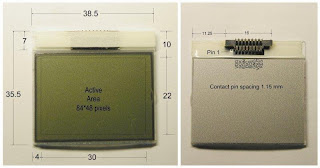How you rate your speaker :use these terms

Here is a list of standard terms that have evolved from years of loudspeaker listening tests in conducted at Canada’s National Research Council (NRC) acoustics lab.


I’ve taken the list from forms originally compiled by Dr. Floyd Toole during his long tenure at the NRC Acoustics Division for use in subjective double-blind listening tests, as well as additions from my own notes during those tests and those of other long-time reviewers, including Ian G. Masters.
The forms and adjectives we used were to solve this very problem, because sometimes reviewers can become almost poetic in their descriptions of loudspeaker sound, as if the speaker were a musical instrument in and of itself!
Here are some common terms to describe loudspeaker sound.
"Forward" indicates that vocals, male and female, tend to be very present, almost as if the singer were standing in front of the plain of the speakers. It can be a negative term, too--if singers sound too close up it may mean the midrange is boosted or exaggerated.
The opposite is "recessed," which means that midrange sounds like singers and choruses seem to be farther back, a bit distant-sounding and well behind the plain of the speakers.
"Spacious" and "open" and "airy," all positive traits, describe the sense of space present around the instruments and singers;
it relates to the speaker’s presentation of the stereo "soundstage" (the three-dimensional positioning of the instruments across an imaginary stage) in addition to how well it reproduces the ambient sounds present in the original recording. The opposite is "closed," "muted" or "dry," which indicate the midrange and treble are rolled off or depressed and dull.
Words like "sibilant" mean the speaker has a midrange/treble peak that emphasizes the "sss" and "ttt" sounds of singers’ vocals.
The same speaker might also be a bit "bright" (a little treble emphasis) or quite "strident" (way too much treble output, making brass and string sound shrill or harsh).
"Thin" means the speaker has little or no bass output, while "boomy" means it has too much bass that dominates its sound.
"Punchy" can be quite pleasing and powerful upper bass, like a disco, but no really deep bass. "Muddy" or "muddled" means the midrange isn’t clear; that it’s hard to separate the distinct contributions of male and female singers in a chorus.
If a speaker has real problems in the midrange, either a big "suck-out" or valley or other uneven response, terms like "boxy" (vocals sound as if the singer were inside a box) or "honky" are useful. Another common coloration is "nasal," which describes what a midrange peak does to vocals, like what happens to your voice when you cup your hands around your mouth while you’re speaking.
Now that you are armed with the right descriptors, you can analyze the sound you hear from speakers in a store demo, at a friend’s house (be careful with words like "honky" or "boxy" around friends!) or from your own loudspeakers....Kaushik

Comments
Post a Comment